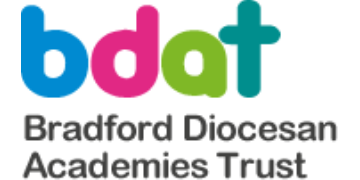In recent analysis, SchoolDash and the Teacher Development Trust found that schools’ spending on staff professional development (CPD) fell more than 40 per cent between 2018 and 2021. But this fall also masks the true amount spent on developing staff in schools.
Most school leaders have felt significant financial pressure, especially in the past year with huge additional costs, particularly around staffing and energy. In the same period expenditure on staffing grew while other budgets such as school maintenance, curriculum resources and administrative supplies fell, so some of this could well be general financial pressures.
But with teachers and support staff becoming increasingly hard to recruit and the volume of trainees falling alarmingly short, a school’s professional development offer is one of the few effective levers leaders have left to attract staff, retain them and build capacity and skill in their teams.
Whatever the reason for the stark fall in investment, the fact is that declared spending on CPD only represents a relatively small part of a school’s total expenditure on professional development activities.
According to 2021 figures, the average secondary school has a CPD budget that, if spent only on teachers, would work out as £371 per teacher. But schools are also probably paying for each teacher to have five INSET days. Taking a typical teacher on an upper-1 pay level and adding the additional cost of their pensions and national insurance contributions, that’s already a cost of about £266 per working day, or £1330 for all five INSET days. Roughly, that means the average secondary school’s CPD budget per teacher is actually only 20 per cent of the real spend on professional development time and activity. The figures for primary work out very similarly.
Professional development remains a powerful asset
And that’s without considering the amount of time staff are paid for things such as performance management conversations, leadership of professional development, teaching and learning, or discussions about developing curriculum, pedagogy, assessment and practice that take place within other whole-staff meetings or subject team meetings.
Realistically, even with the average CPD budget, a school’s real spend on professional development is going to be comfortably in excess of £2000 per teacher.
Ultimately, even with CPD budgets under pressure, the most important thing for leaders to think about is how well they’re using this huge investment that is mainly in internal staff time: how well it’s planned, how it’s structured and how well it’s led. The focus can’t be just on CPD content, or even its process, but must also be on the culture in the school that research tells us can either act as a barrier to or a driver of retention and development.
Tactically, I’d recommend that leaders consider the following.
- Invest in the quality of leadership, whether maximising take-up of the fully funded cohorts of the new NPQs, taking advantage of government-funded headteacher coaching or other specialist qualifications in CPD leadership.
- Consider how you’re aligning with latest evidence on effective CPD mechanisms by building capacity for pedagogical (or instructional) coaching and in research-informed teacher enquiry/research. This can ensure that each hour spent in development is more likely to have an impact on standards, morale and retention.
- Consider how you can use the apprenticeship levy to access training for support staff, teachers and leaders. The fantastic SkillsForSchools website from Unison lists a huge number of qualifications and support options for every non-teacher role.
- Consider how you can generate efficiencies from working as a cluster or trust of schools by sharing courses and opportunities.
- Invest in support for a thorough review and benchmarking of how effective your current CPD is compared to a) other schools and b) best practice. You could consider light-touch options such as Dr Sam Sims’ Teacher Working Environment Survey or a more comprehensive review with follow-up coaching, such as a diagnostic review.
Professional development remains a powerful asset in recruitment, retention and school improvement. Budgets are squeezed and leaders face difficult choices, but there’s no reason to see investment in the workforce decline in quality and effectiveness.












Your thoughts